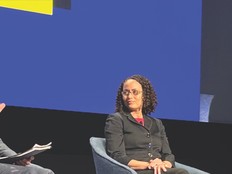Take a Seat—and Save

Flashback to 1996, and information technology at the Bureau of Alcohol, Tobacco and Firearms is a jumble of applications, silos of data and uninteroperable communications systems.
Patrick Schambach, then CIO of the agency, describes it as "such a mishmash that one person could create a file and not necessarily be able to share it with the others in the agency who needed it."
The situation at the time was much the same for NASA, where IT lacked the most basic interoperability, and mission-critical subject area experts were pressed into doing ad hoc network administration, says Robert Freitas, IT support manager at Goddard Space Flight Center and former acting deputy program manager for the Outsourcing Desktop Initiative for NASA (ODIN).
As at ATF, NASA's budget didn't begin to stretch far enough to make a clean sweep of the incompatible and outdated IT.
The way out chosen by both agencies: Outsource desktop PC operations and use the approach referred to as seat management.
"The strategy appears to have worked," notes Jacques S. Gansler, director of the Center for Public Policy and Private Enterprise at the University of Maryland. "NASA estimates 32 percent cost savings and substantial improvements in service deliveryÂa 99 percent service availabilityÂand consistency across the agency." Additionally, Gansler notes in a report on government seat management, fixed prices let managers see actual costs of IT and accurately budget for it, security has been enhanced because updates and virus patches are done automatically agencywide, and employees have been shifted to core mission work.
At ATF, results were much the same, says Schambach, now senior vice president and general manager of e-government and infrastructure solutions for Nortel PEC Solutions, a technology services provider in Fairfax, Va.
Three years into its efforts, the agency commissioned a total cost of ownership study comparing ATF's desktop PC costs with those of a comparably sized agency and found its costs were less, Schambach says.
Define and Refine
The road is always rough for pioneers: The foundation for successful seat management requires carefully defining the requirements, both men caution. And at NASA, that foundation was faulty, Freitas says.
"We spent the first two or three years in staff meetings with our contractors going back and forth, 'Does too! Does not!' " he says. One example: "We specified a speaker. The contractor said, 'Well, that little speaker in the front of the PC fits the bill.' We said, 'Not really.' So we went back and forth and ended up with two external speakers."
Ironing out the requirements must begin in the agency, Schambach says. At ATF, "much of the technology had been acquired at different times and by different functions within the agency. And people gravitate toward what works for them, not necessarily toward a standard for the agency as a whole. Those are just added reasons for needing that discovery process," he says.
Failure at this early point can subvert the entire initiative. The Navy Marine Corps Intranet, a 400,000-seat initiative, has had well-publicized problems ranging from security concerns to integrating legacy applications.
"When you look at NMCI, the Navy didn't have [an adequate] level of definition of their requirements," Schambach says.
Adds Chip Mather, a partner at IT acquisition consultancy Acquisition Solutions of Oakton, Va., "Where seat management has been done well, agencies have managed users' expectations, ensured that they have defined their requirements and that the contractor understands them."
But for agencies, the sticking points are more likely to be cultural than technological, Mather says.
Start at the Top
Source: NASA
The first step to getting user buy-in is getting management buy-in, says NASA's Freitas. "You're not going anyplace without it." In its early days, ODIN was hampered by the tepid support it got from top management, he says.
The second step is to "set up a change management process to educate the organization on what to expect, why it's coming, how it will affect them," he says. "That didn't happen at NASA; ODIN just got kind of shoved down their throats, and it left a bad taste in their mouths."
What's crucial, Schambach says, is that an agency builds adequate flexibility into its seat management contract.
At ATF, he says, "we weren't trying to predict where technology was going. We didn't have to. What we were trying to do was define what we needed for our agency to accomplish its mission. We wanted to be able to change as the technology changed, and if we felt it wasn't working, we wanted a graceful way out."
ATF crafted a contract based on a 36-month refresh cycle for desktop PCs. If, during the first month, the agency wanted out, it would pay 35/36 of the contract value. During the second month, buyout would cost 34/36 of the contract.
"Every month we had a fixed buyout amount that we could pay if we didn't think it was working," Schambach says.
"On the flip side," he says, "if we got to the end of the 36 months and decided we didn't need to do a refresh, we could keep the stuff for however long we felt it was working, and the monthly payment would drop down to just cover maintenance."
The Fine Print
At NASA, Freitas says, "the contract is a living, breathing animal." The agency can make changes through master contract modifications as well as in individual orders. And users can choose among several PCs and 18-, 36- or 60-month refresh cycles. Another provision lets NASA add new technology.
But as well as it works for ATF, NASA and several other smaller agencies such as the Peace Corps, PC outsourcing has failed to attract the following that many predicted.
"When I first got into it eight years ago, I was out on the circuit, predicting that in five years we'd see a big shift to seat management," Schambach says. "Why we're not seeing it is, I confess, a puzzle to me."
Seat management isn't dead, says Larry Allen, executive vice president of industry alliance Coalition for Government Procurement of Washington. "There were significant a la carte seat management solutions brought through General Services Administration schedule contracts," he says. "There still is schedule business being done in this manner, but because it is not tied to one vehicle, seat management as a concept has kind of faded into the background."
Allen adds, "Agencies clearly preferred being able to keep some control of what they bought and managed. Agencies like to keep a grip on their IT assets."
World changes since the start of the initiatives at ATF and NASA further contributed to seat management's general failure to thrive, Allen says. "Agency security needs took center stage following 9/11," he says. "And it follows that managing your own network might be a better way to ensure security than if a private seat management contractor does it for you."
Both were challenges Schambach faced in 2002 when he left ATF to become CIO of the newly created Transportation Security Administration within the Homeland Security Department. There he designed a newÂand successfulÂseat management initiative.
Security "was one of the things we built in from the beginning," Schambach says. "It was a part of the whole process of defining requirements and services."
Managing desktop outsourcing is all about supporting the mission, Freitas says. Both NASA and ATF achieved the standardization they hoped for in outsourcing their PC operations.
Similarly, the initiative solved ATF's two biggest IT problems, Schambach says. "One was to get standardization across the organization. The second problem we had was budgeting for desktop replacements. This is a nightmare, I think, for every agency."






